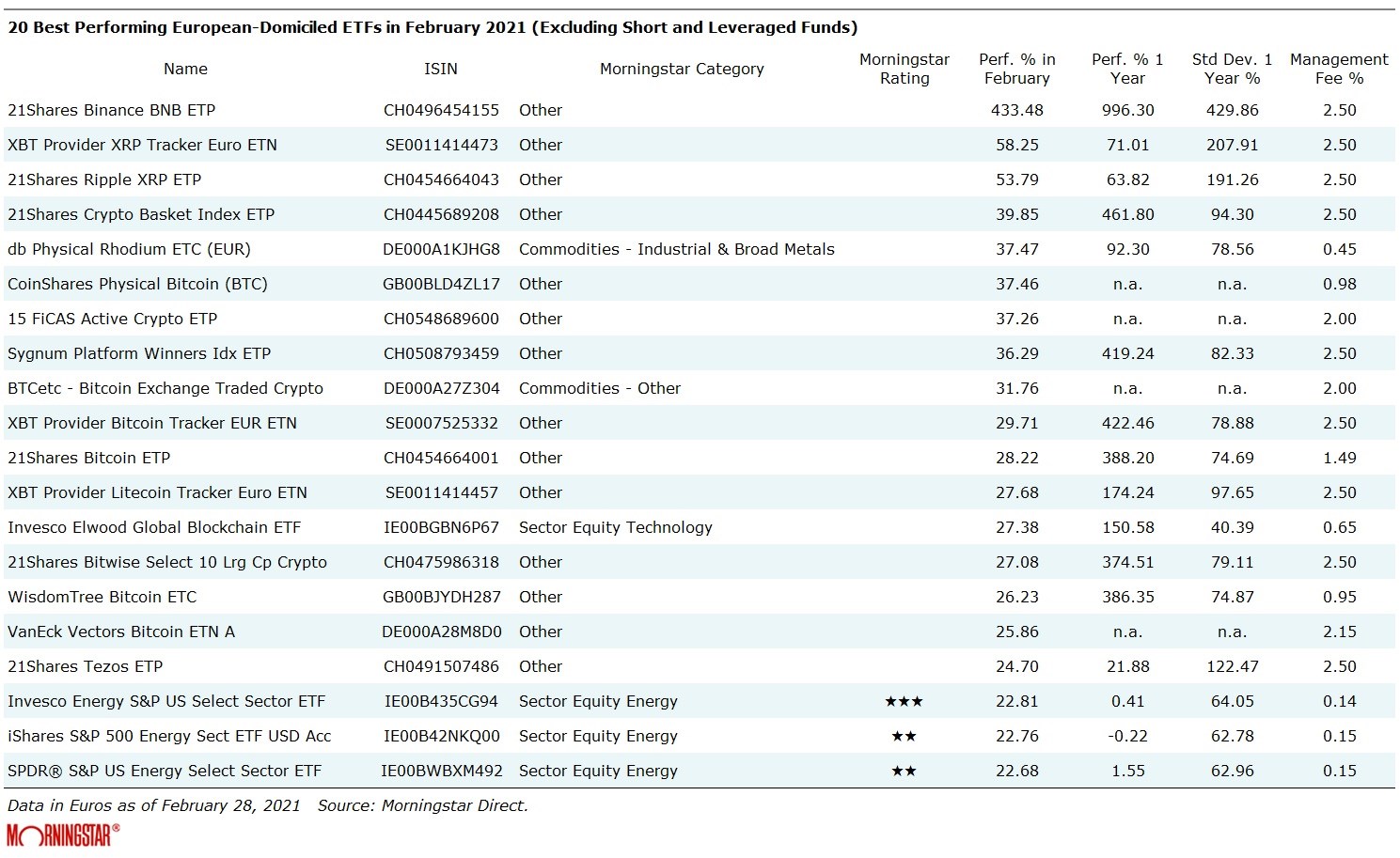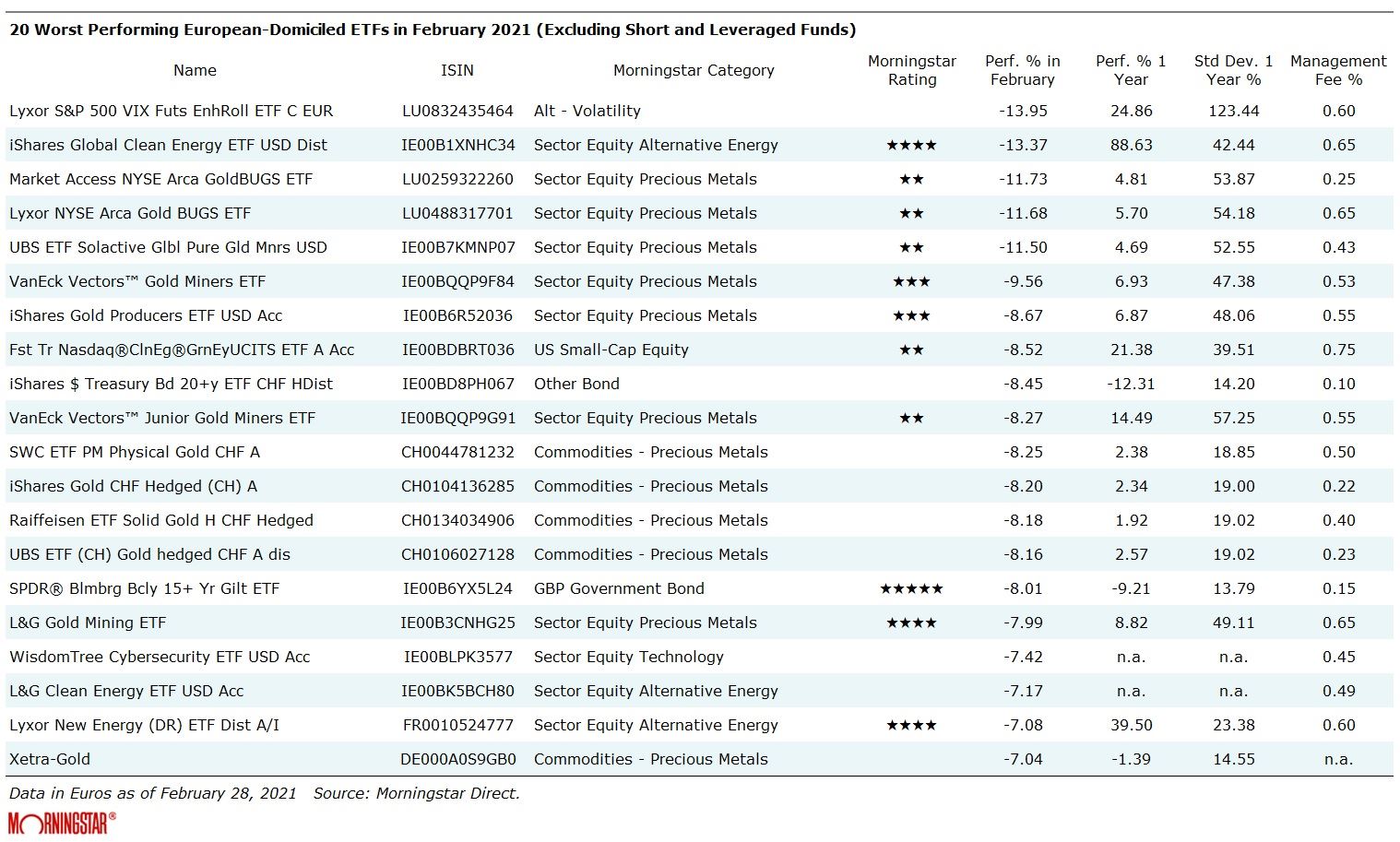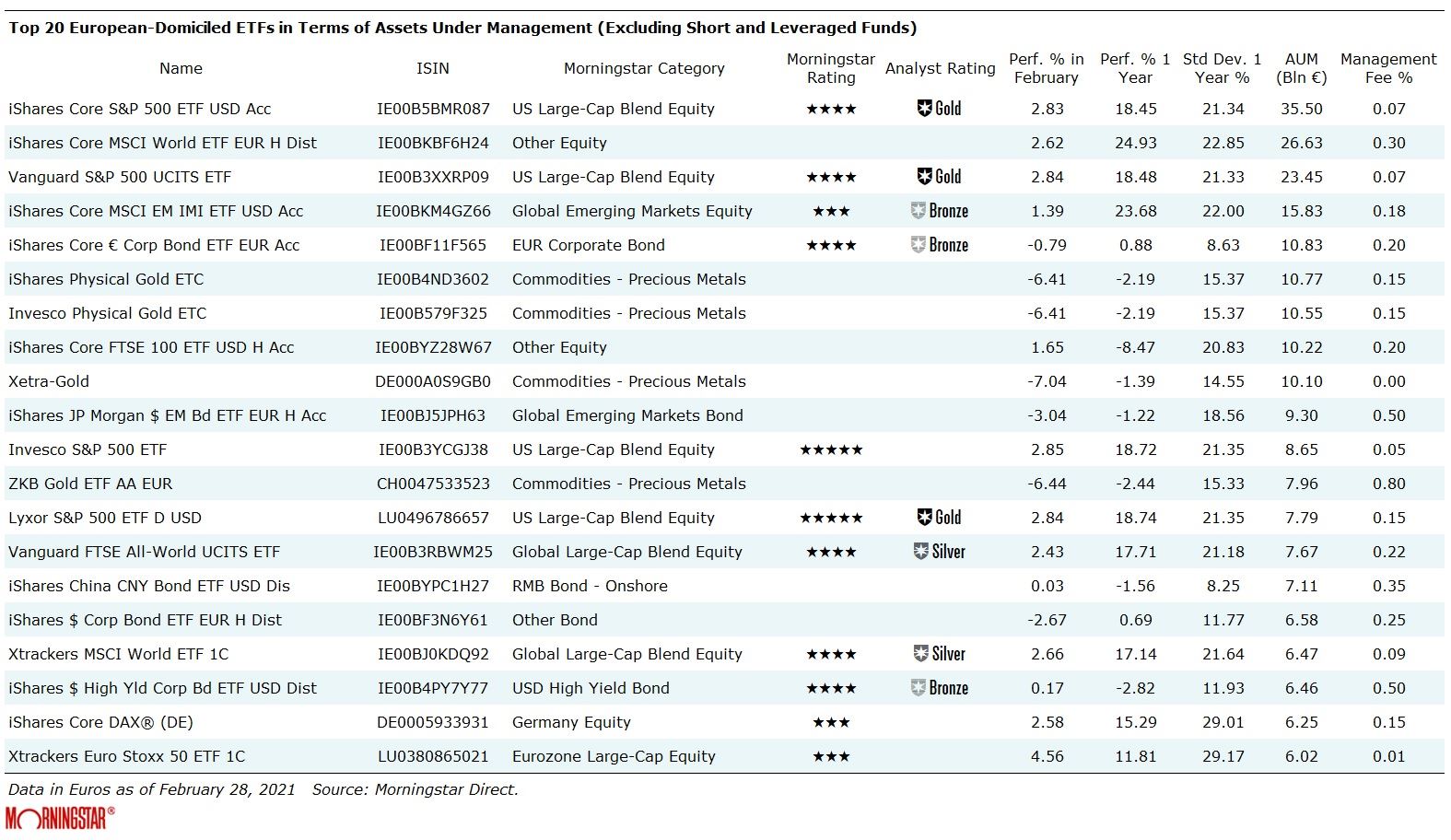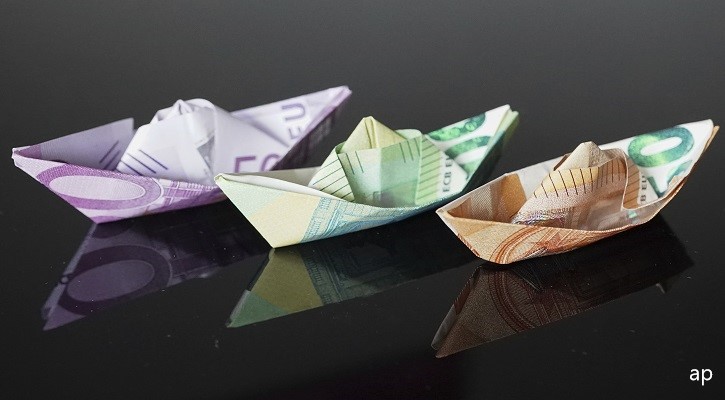
According to Morningstar data, there were almost 447 percentage points between the best and worst performing exchange-traded products (ETPs) in February, with returns for the month ranging from 433% to -7%.
We have looked at the key trends in the second month of the year, excluding inverse and leveraged funds. These instruments, being purely passive products, reflect the evolution of the markets without the bias (good or bad) of an active manager.
Top Performing ETFs of February
Cryptocurrencies continue to shine. A combination of endorsements from prominent business people including Tesla's Elon Musk, and several investment banks that have said they would buy and accept the currencies, have been pushing up the value of main cryptos since the beginning of the year.
If in January Ethereum was the name on investors’ radar, February was all about Binance Coin, with the 21Shares Binance BNB ETP (ABNB) showing an outstanding 433% return last month. Over the last year, Binance gained about 1,100%, passing from $19 to $230 at the end of February.
With such performances, it's no surprise the Switzerland-based cryptocurrency ETPs issuer 21Shares announced last week that the company’s cryptocurrency assets under management jumped from $500 million to $1 billion within two weeks. It says there has been massive demand from institutional investors, as several wealth managers, family offices, private banks and rich individuals are entering the cryptocurrency market to diversify their investment portfolios.
Speaking of diversification and risk – and tempting performances – it is always wise to remember that what goes up can go down very quickly (especially in the world of trackers).
A good metric to use to get a measure of the volatility of such instruments is the standard deviation. To give an idea: the best performing ETP of February shows 430 points of standard deviation over the past year, while a tracker following the S&P 500 index has a standard deviation of 22 points in the same period.

Among the cryptos in the top performers table is a tracker exposed to rhodium, the db Physical Rhodium ETC (XRH0). Relatively unknown, this metal’s global demand comes almost exclusively from the auto industry, where it is used alongside palladium and platinum.
All three metals are used in catalytic converters to reduce harmful emissions, and tightening environmental regulation is forcing auto makers to put more into each vehicle. An increasing demand and a worsening supply (several South African mines were shutdown earlier this year because of Covid-19, with the country accounting for around 80% of global rhodium mined supply) pushed prices at record levels.
Finally, there are three funds exposed to the energy sector. The cuts to the production decided in recent months and the cold wave that hit Europe and North America - without forgetting the tensions in the Middle East between Iran, Yemen and Saudi Arabia - have caused the price of oil to jump well above the threshold of $60 a barrel. The Chinese growth also supported the demand for oil, in addition to the hopes that vaccination campaigns will avoid new “hard” lockdowns.
The Worst Performing ETFs of February
Turning to the laggards, the worst performing ETP in Europe last month was Lyxor S&P 500 VIX Futures Enhanced Roll UCITS ETF (VOOL), which shed 14% and tracks the S&P 500 VIX Futures Enhanced Roll Index, a benchmark that offers exposure to the expected implied volatility of the S&P 500. Also known as the “fear gauge”, this index is often seen as a reflection of perception of risk.
In second position we find the iShares Global Clean Energy UCITS ETF (INRG), one of the top performers last year, which suffered the rebound of the oil price. Finally, gold dropped in February as dollars firmed and US Treasury yields continued to rise. The yellow metal closed the month at about $1,730 an ounce (it was worth $1,956 on January 6).

The Biggest ETFs
Monthly top and flop performers often coincide with very volatile and therefore risky products, which should play a satellite role in your portfolio. Below is an overview of the biggest European-domiciled ETPs in terms of assets, which could be more appropriate to consider among core holdings. Seven out of 20 show a negative return in February. Monthly performances range for 4.6% from Xtrackers Euro Stoxx 50 UCITS ETF 1C (XESC) down to ZKB Gold ETF (ZGLD), which lost 6.4% in the month.




























